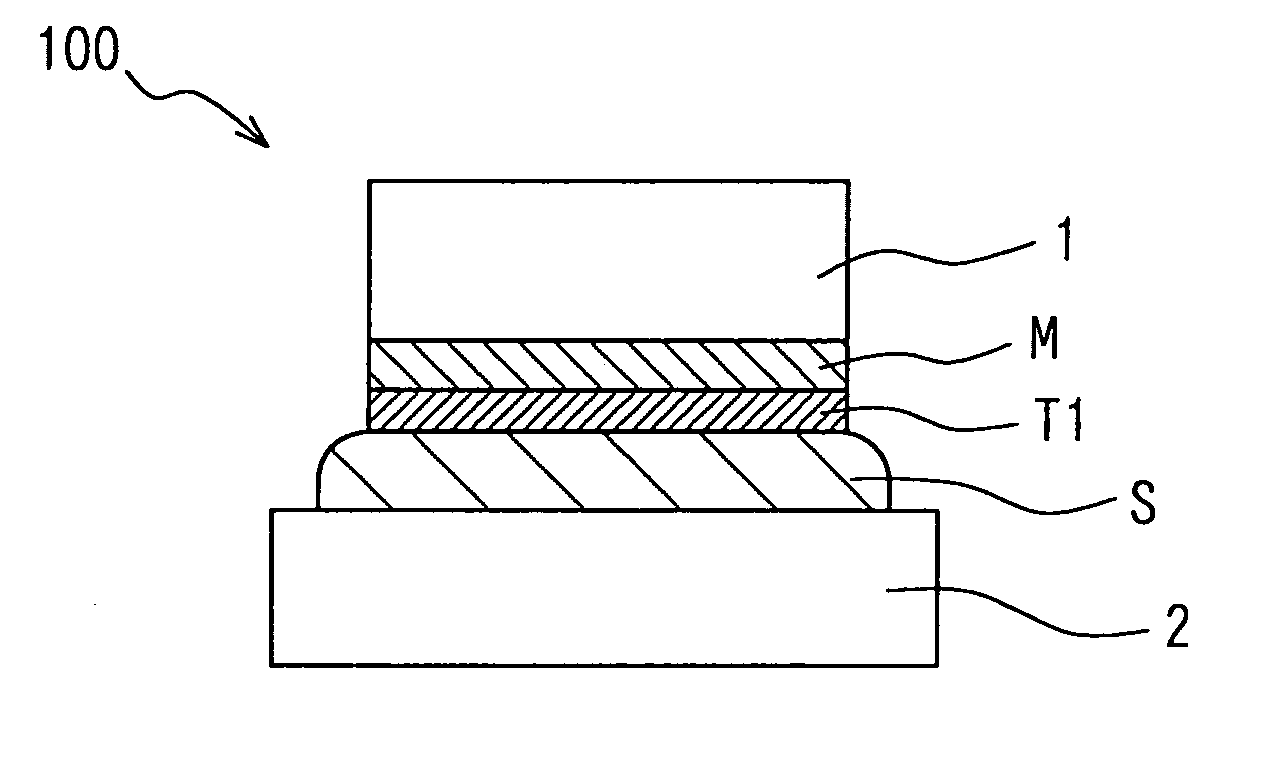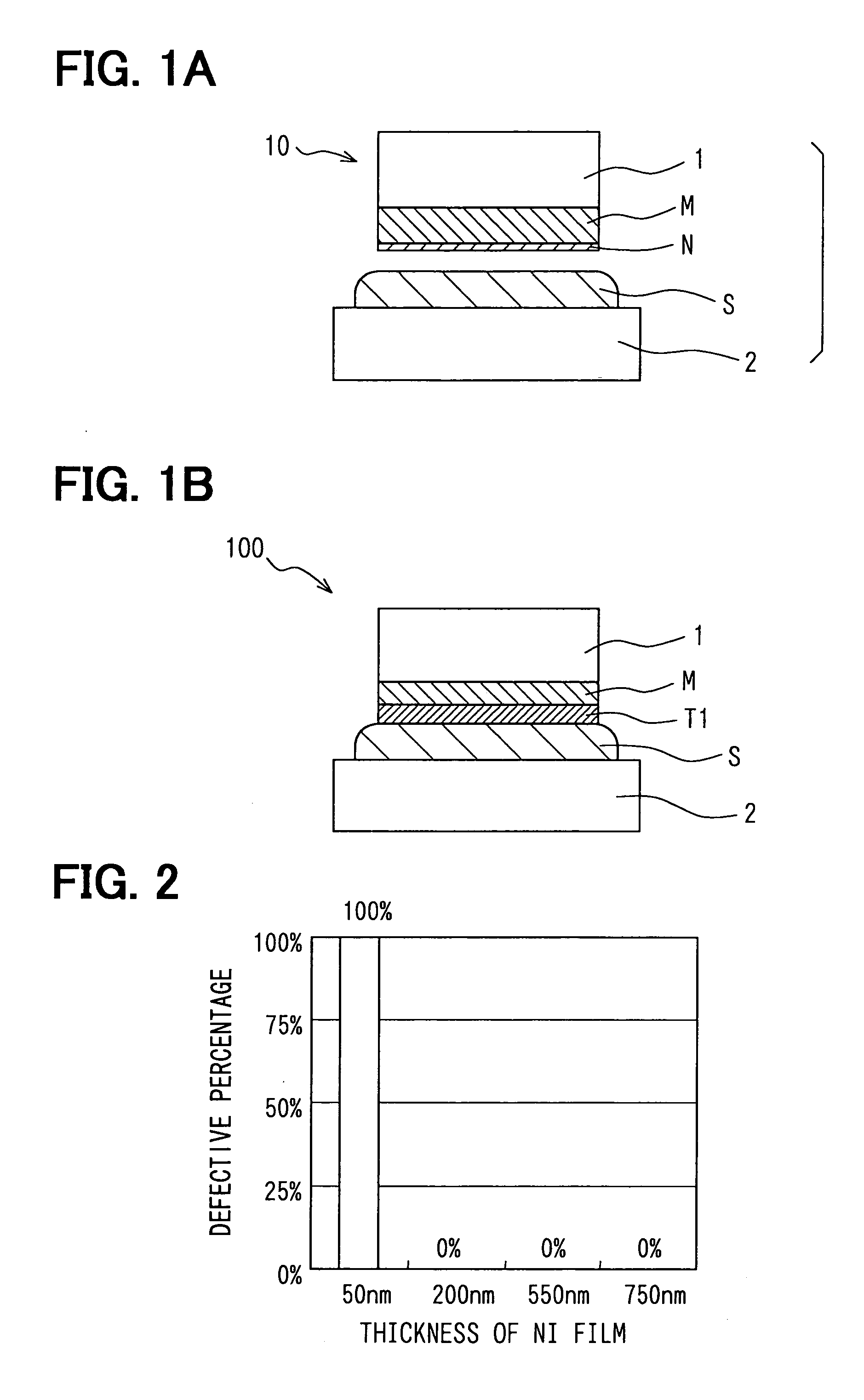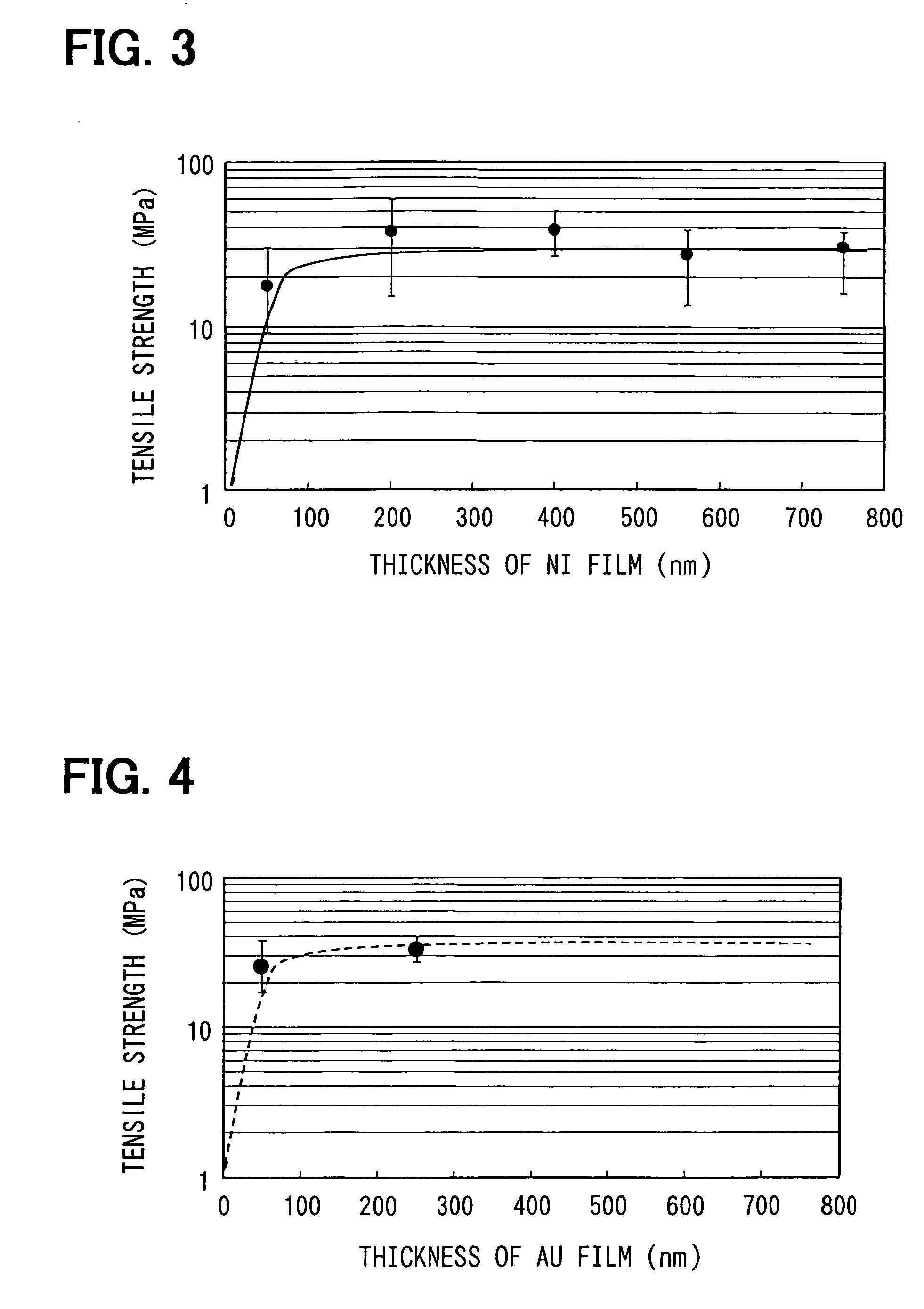Semiconductor device having tin-based solder layer and method for manufacturing the same
- Summary
- Abstract
- Description
- Claims
- Application Information
AI Technical Summary
Benefits of technology
Problems solved by technology
Method used
Image
Examples
first embodiment
[0025] A semiconductor device 100 according to a first embodiment of the present invention is shown in FIGS. 1A and 1B. FIG. 1A shows the device 100 before heat treatment, i.e., before soldering, and FIG. 1B shows the device 100 after heat treatment, i.e., after soldering.
[0026] The device 100 includes a semiconductor substrate 1 and a base member 2. The substrate 1 has an electric part such as a power transistor formed on a foreside of the substrate 1. The backside of the substrate 1, which is opposite to the semiconductor part, is bonded on the base member 2 with a tin-based solder layer S. The base member 2 is, for example, a heat sink, a lead frame or a circuit board. The device 100 is manufactured as follows.
[0027] Firstly, the electric part is formed on the foreside of the substrate 1. The first metal layer M and the second metal layer N are formed on the backside of the substrate 1 in this order. Thus, a semiconductor chip 10 is formed. Then, the chip 10 is mounted on the b...
second embodiment
[0043] A semiconductor device 101 according to a second embodiment of the present invention is shown in FIGS. 6A to 6C. FIG. 6A shows the chip 10 before the first heat treatment, and FIG. 6B shows the chip 10 after the first heat treatment and the base member 2 before soldering. FIG. 6C shows the device 101 after the second heat treatment, i.e., after the soldering.
[0044] The device 101 is manufactured as follows. Firstly, the first metal layer M and the second metal layer N are formed on the backside of the substrate 1 in this order so that the semiconductor chip 10 is prepared. The chip 10 is firstly heated so that an intermediate alloy layer O is formed. The intermediate alloy layer O is composed of the first metal and the second metal alloy. The intermediate alloy layer O is disposed between the first and the second metal layers M, N. After this first heat treatment, the chip 10 is mounted on the base member 2 through the solder layer S. Then, the chip 10 with the base member 2...
PUM
 Login to View More
Login to View More Abstract
Description
Claims
Application Information
 Login to View More
Login to View More - R&D
- Intellectual Property
- Life Sciences
- Materials
- Tech Scout
- Unparalleled Data Quality
- Higher Quality Content
- 60% Fewer Hallucinations
Browse by: Latest US Patents, China's latest patents, Technical Efficacy Thesaurus, Application Domain, Technology Topic, Popular Technical Reports.
© 2025 PatSnap. All rights reserved.Legal|Privacy policy|Modern Slavery Act Transparency Statement|Sitemap|About US| Contact US: help@patsnap.com



